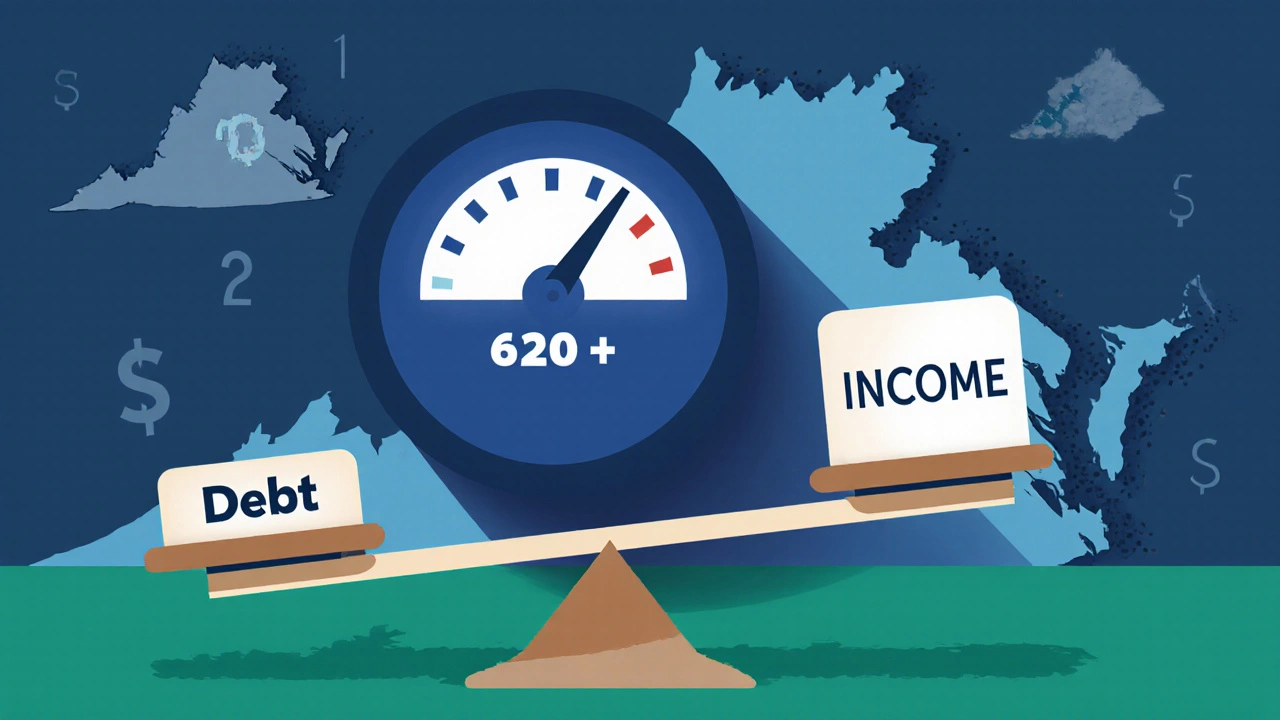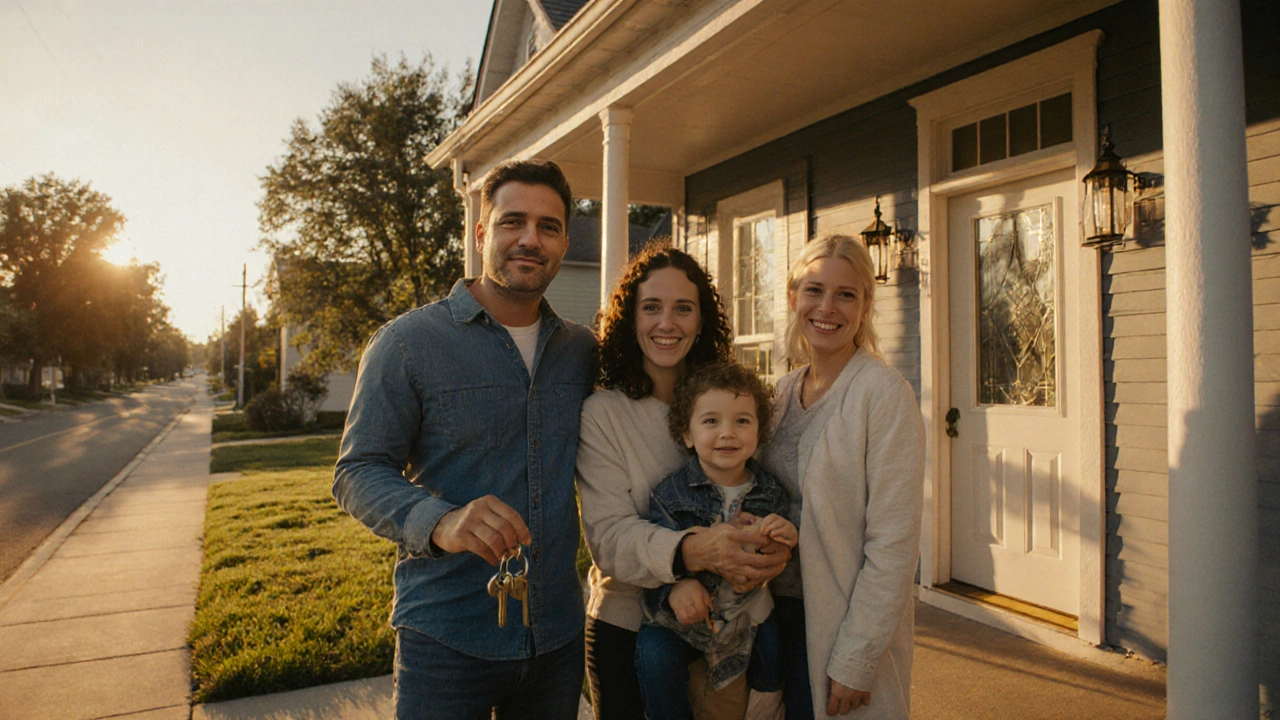Virginia Homebuyer Income Calculator
How This Calculator Works
Virginia's income limits are based on the local median family income (MFI) multiplied by 115%. This calculator shows you the maximum allowable income for your county and family size.
Key Requirements
First-time buyer: No home ownership in past 3 years
Credit score: 620+
DTI ratio: Under 45%
Home: Primary residence only
Education: State-approved homebuyer course required
When you hear “Virginia First‑Time Homebuyer Program is a state‑run set of loans, grants, and tax credits designed to help new buyers afford a home in the Commonwealth,” it can feel like a lot of jargon. The good news? The eligibility rules are pretty straightforward once you break them down.
Quick Takeaways
- You must be a first‑time buyer or haven’t owned a home in the past 3 years.
- Income limits vary by county; most of Virginia caps household earnings at $120,000 for a family of four.
- Credit scores of 620 + usually qualify for most assistance, but some programs accept lower scores with a higher down‑payment.
- Debt‑to‑Income (DTI) ratio should stay below 45 % for loan approval.
- You’ll need to complete a state‑approved homebuyer education course before closing.
Who Can Apply?
The core definition is simple: if you’ve never owned a primary residence, or if you sold your last home more than three years ago, you’re eligible. The Virginia Housing Development Authority (VHDA) administers most of the state’s assistance programs, from down‑payment grants to favorable mortgage rates uses this rule as a baseline.
There are a few edge cases:
- Veterans can combine a VA Loan with Virginia credits, but they still need to meet the first‑time buyer definition.
- Those who inherited a home and sold it within the past three years are considered first‑time buyers again.
- If you owned a home with a spouse who’s now a new buyer, you may still qualify as long as you meet the three‑year gap.
Income Limits and How They’re Calculated
Virginia ties income caps to the median family income (MFI) for each jurisdiction. For example, in Fairfax County the 2025 MFI for a family of four is $112,000, so the program caps household income at 115 % of that - roughly $129,000. Rural counties like Lee have much lower limits, often under $80,000.
To calculate your qualifying income:
- Identify your county’s 2025 MFI (VHDA publishes a handy table each year).
- Multiply the MFI by 115 % (or the specific multiplier shown for that county).
- Round to the nearest hundred - that’s your maximum allowable household income.
If you earn over the limit, you’ll need to explore alternative options like the USDA Rural Development loan, which has its own set of income thresholds.
Credit Score Requirements
Most Virginia programs mirror the Federal Housing Administration (FHA) standards. The Federal Housing Administration (FHA) offers low‑down‑payment loans that many state programs piggy‑back on typically requires a minimum credit score of 620. If you’re between 580‑619, you can still get an FHA‑backed loan but you’ll need a 10 % down payment instead of the standard 3.5 %.
VA loans have a more flexible approach - they don’t set a hard credit score floor, but lenders usually look for 620 or higher to keep interest rates competitive.
Tip: If your score is borderline, pay down a small credit card balance before you apply. A single point can make the difference between qualifying for an extra 0.125 % off your rate.

Debt‑to‑Income Ratio (DTI) - The Hidden Gatekeeper
The Debt‑to‑Income Ratio (DTI) measures your monthly debt payments against your gross monthly income is a major factor for any mortgage.
- Front‑end DTI (housing costs only) should stay under 28 % of gross income.
- Back‑end DTI (all debt) must stay under 45 % for most Virginia assistance programs.
To improve your DTI, consider consolidating high‑interest credit cards or postponing large loan payments until after you close on your house.
Property Requirements - What Kind of Home Qualifies?
Virginia assistance programs focus on primary residences, not investment or vacation homes. The home must be:
- Located within Virginia (including the District of Columbia for certain regional programs).
- One‑to‑four units - you can’t buy a multi‑family building unless you live in one of the units.
- Under the program‑specific price cap - for most counties the cap is 115 % of the local median home price. In 2025, that translates to about $460,000 in Northern Virginia and $260,000 in many central and southern counties.
Homes must also meet the HUD Minimum Property Standards. A pre‑purchase inspection can flag any major issues before you commit.
Required Documentation - Gather These Early
Having the paperwork ready speeds up the process and shows lenders you’re serious. You’ll typically need:
- Two most recent pay stubs (or 30‑day profit‑and‑loss statement for self‑employed).
- Last two years of federal tax returns (including Schedule C for freelancers).
- Bank statements for the past 30 days showing reserves.
- Proof of citizenship or lawful residency (for VA loans).
- Completed Homebuyer Education Course a 6‑hour state‑approved class that covers budgeting, mortgage basics, and home maintenance certification.
Some lenders also ask for a letter of explanation if you have recent credit inquiries or a short employment gap.

Common Pitfalls and How to Avoid Them
Relying on pre‑approval alone. A pre‑approval is a snapshot. If your income changes or you incur new debt before closing, you could fall out of the qualifying range.
Not accounting for closing costs. Even with down‑payment assistance, you’ll need to cover fees like appraisal, title insurance, and escrow. VHDA often offers a separate grant to cover up to 3 % of the purchase price, but you must request it early.
Skipping the homebuyer education. The certificate is mandatory for most programs; forgetting it can delay or derail your loan.
Step‑by‑Step Checklist
- Confirm you meet the first‑time buyer definition (no home ownership in the past 3 years).
- Check your county’s income limits on the VHDA website.
- Pull your credit report; aim for 620+.
- Calculate your DTI - keep front‑end under 28 % and back‑end under 45 %.
- Complete a state‑approved homebuyer education course and keep the certificate.
- Gather required documents (pay stubs, tax returns, bank statements).
- Get pre‑approved with a lender that participates in VHDA or FHA programs.
- Find a home that meets price and property criteria.
- Submit your application for the specific Virginia assistance program (e.g., VHDA HomeFirst, Mortgage Credit Certificate).
- Close on the home, paying any remaining closing costs and securing your down‑payment assistance grant.
Follow these steps and you’ll be well on your way to joining the ranks of Virginia’s growing community of first‑time owners.
Frequently Asked Questions
Do I need a 20% down payment to qualify?
No. Most Virginia programs let you put down as little as 3% when paired with an FHA loan, and the Mortgage Credit Certificate can further reduce your tax liability, effectively lowering the cash you need.
Can I use a VA loan if I’m a first‑time buyer?
Absolutely. VA loans are available to eligible veterans and active‑duty service members regardless of first‑time status, and they meet Virginia’s definition as long as you haven’t owned a home in the past three years.
What if my credit score is below 620?
You can still qualify with a higher down payment (10% for FHA) or by using a conventional loan that allows lower scores, but you’ll likely lose access to the most generous down‑payment assistance.
How long does the application process take?
From first document gathering to closing, expect 45‑60 days if you have all paperwork ready and no major credit or appraisal issues.
Are there any post‑purchase requirements?
Yes. Some grants require you to occupy the home as your primary residence for at least three years, and the MCC benefit is only valid while you own and live in the property.
